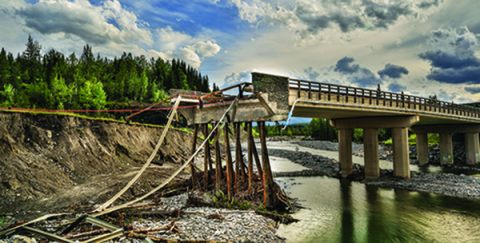
The costs of climate change are no longer a hypothetical problem for our children. They’re hitting us right now, increasing costs for our communities and our household finances.
The average number of natural catastrophes in Canada has doubled over the past three decades and quadrupled from fifty years ago. Before 1990, only three Canadian disasters exceeded $500 million in damages. In the past decade we’ve had ten natural disasters that caused a total of $6.2 billion in infrastructure damage alone. This figure includes flooding in Alberta and in Toronto last summer that caused about $2 billion and $1 billion in infrastructure damage respectively. Natural catastrophes are expected to cost Canada $5 billion annually by 2020 and $21-$43 billion by 2050, up from an average of $1 billion in recent years.
These costs don’t just hit municipalities and homeowners. We all pay the price through disaster support, higher costs for products, or higher insurance premiums. The insurance industry is developing more detailed calculations of the costs and risks expected from climate change and passing them on to customers. The cost of homeowners’ insurance in Canada has more than doubled since 2000, rising at almost three times the rate of general inflation. These costs are expected to keep rising.
It makes sense to try to limit these damages. Estimates show that every dollar invested in climate adaption can save $9 to $38 in future avoided damages.
Much of the costs of climate change and of adaptation to climate change are at the municipal level. These costs include higher capacity sewer mains to help reduce flooding, other flood, fire and storm protection measures, and more resilient infrastructure. New building standards and urban design can limit water runoff and reduce urban heat build-up.
However, it is better to prevent climate change from getting worse in the first place by reducing use of fossil fuels and other greenhouse gases. Unfortunately, under the Harper government Canada has become an obstacle to progress on climate change issues.
A $30/tonne progressive carbon tax on emissions could generate $15 billion annually, with half the funds going to a green tax refund to ensure a majority of households are better off. The rest could be invested to help communities mitigate and adapt.
Action is needed in many different areas. We can either pay a bit now, or a lot more later.


